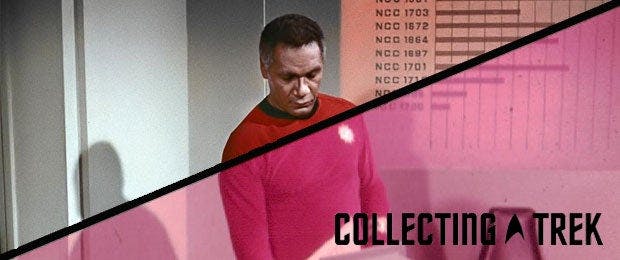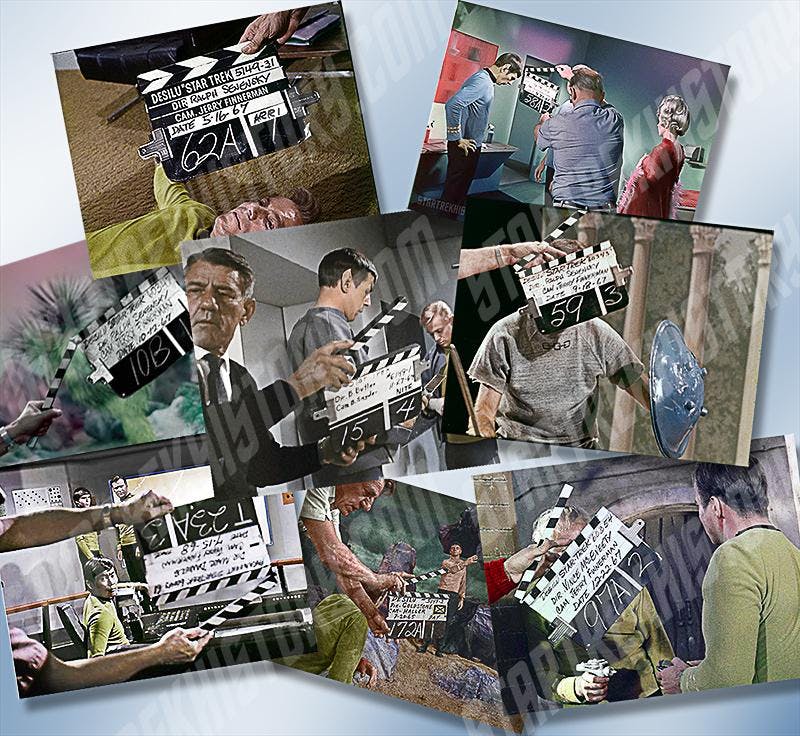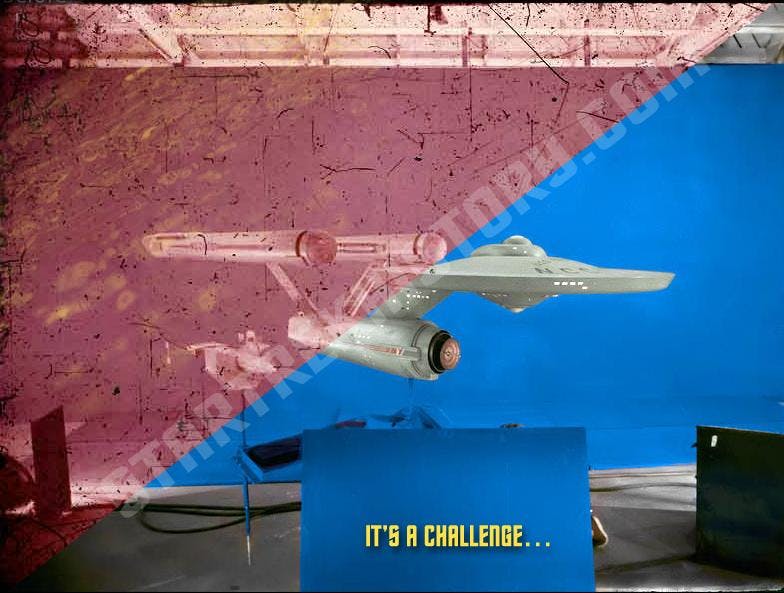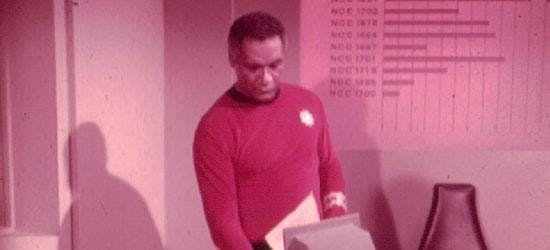Published Jun 14, 2014
Rescuing Star Trek Treasures
Rescuing Star Trek Treasures

In 1967, Gene and Majel Barrett Roddenberry, along with Bjo and John Trimble, began a company called Star Trek Enterprises, known more commonly by its later name, Lincoln Enterprises, which brought fans exclusive merchandise, newsletters and an official fan club named The Star Trek Interstellar. For many fans, the products and publications of Lincoln Enterprises were a direct line to authorized merchandise and unique items of memorabilia. Most importantly, the company made available for purchase 35mm clips from actual positive film reels of episodes—used by the editors—that have become themselves an important historical resource because these slides sometimes included behind-the-scenes images or deleted sequences. The “clapper board” images, showing the moments before filming, are exciting as they show the actors preparing for their roles or feature key behind-the-scenes artists and crew. (The original negatives used to create the episode prints are safely stored in a climate controlled environment to preserve them for future generations).

Unfortunately, these incredible Star Trek treasures are in danger of being “lost” as they fade and are marred with scratches and stains resulting from almost a half century of handling. The film stock that the positive color prints (the source of the film clips sold to fans) used dyes in their emulsions that were chemically unstable, reducing many of the film clips to a magenta color.
In true Star Trek tradition, a group has taken action to try and solve the problem. Dave Rohlf, Curt McAloney and David Tilotta are volunteering their talents to restore these film clip images to their original brilliance and preserve an important aspect of Star Trek production history. Their unofficial fan website, Startrekhistory.com, features the restored clips and analysis to bring forgotten aspects of Star Trek history back to life.
The original idea for the website was Rohlf’s, who wanted to create a showcase for vintage Star Trek advertising pieces and highlight the contributions of actors and behind-the-scenes artists to The Original Series. Eventually, the restoration project came under the direction of McAloney, a graphic designer, and Tilotta, a professor of chemistry at North Carolina State University. Its mission, as McAloney has said is “To record and preserve the behind-the-scenes aspect of the Star Trek television series. To explore strange new images, to boldly restore what’s never been restored before.”

The results of their endeavors have been featured in official publications and licensed works, including Titan’s Star Trek Magazine and the amazing photo book by Paula M. Block with Terry J. Erdmann, Star Trek 365.
As Tilotta explains, the fading colors are difficult to restore, “Right now, there is no cheap and reliable way to chemically reverse this fading.” But, the team has a digital solution. McAloney tells that, “There is a way, however, to digitally return (restore) the colors in the slide images to their original hues and intensities. We do this by first scanning the slides on a high-quality film scanner and then adjusting the color information in the images using software.” The process may take up to 2 hours to properly restore each image and is done as a volunteer effort.


In addition to restoring the image, the team conducts research of production documents and interviews key behind-the-scenes artists to place the images in a historical context. Some of their findings are exciting and reshape what is known about the production of TOS. For example, Tilotta’s favorite discovery is that TOS designer Matt Jefferies based some of the technical drawings of the U.S.S. Enterprise (often seen on screens during various episodes) on old airplane designs. For more, check http://startrekhistory.com/article4.html.
The Startrekhistory.com website features images from the group’s own collections as well as those from fellow fans who send in their clips and slides for restoration. Included here is an example of the team’s restoration work on a slide from our collection featuring an image from the episode “Court Martial.” Such volunteer efforts are yet another example of the creativity, energy, and devotion that Star Trek fans have brought to expanding the universe of Star Trek and preserving its history
Maria Jose and John Tenuto are both sociology professors at the College of Lake County in Grayslake, Illinois, specializing in popular culture and subculture studies. The Tenutos have conducted extensive research on the history of Star Trek, and have presented at venues such as Creation Conventions and the St. Louis Science Center. They have written for the official Star Trek Magazine and their extensive collection of Star Trek items has been featured in SFX Magazine. Their theory about the “20-Year Nostalgia Cycle” and research on Star Trek fans has been featured on WGN News, BBC Radio, and in the documentary The Force Among Us. They recently researched all known paperwork from the making of the classic episode "Space Seed" and are excited to be sharing some previously unreported information about Khan's first adventure with fellow fans. Contact the Tenutos at jtenuto@clcillinois.edu or mjtenuto@clcillinois.edu.

